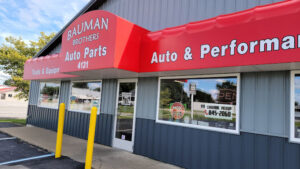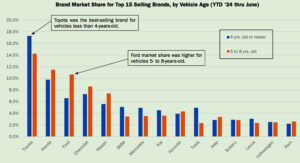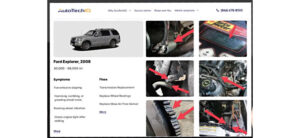Light Detection and Ranging (Lidar) sensors in Level 2+ and Level 3 automated driving systems are set to experience significant growth
New York—In imagining a future of self-driving cars, progress toward developing these highly automated, software-defined vehicles has led to increased standardization of hardware. One of the primary drivers behind the continual improvement of Advanced Driver Assistance Systems (ADAS) is the increased use of Light Detection and Ranging (Lidar) sensors in Level 2+ and Level 3 automated driving systems, which are set to experience significant growth in the coming years.
ADAS technologies such as automatic emergency braking, blind spot warning, adaptive cruise control, and lane departure warning have become increasingly common in mainstream vehicles — having trickled down from installations in luxury brands. These driver-assist systems not only enhance the safety and comfort of vehicle operation but also serve as a foundation for more advanced automated driving features. And Lidar will have a large role in enabling these systems to transition from mere driver-assist to allowing a car to function in a semi-autonomous way.
The standardization of ADAS is driven by both automakers striving for competitive differentiation and compliance factors, like the European General Safety Regulation mandating the inclusion of certain ADAS features in new vehicles sold in Europe after July 2024 and July 2026.
“While the industry’s long-term target is Level 4 autonomous vehicles, such an achievement on a mass scale is still a ways off,” said Jeremy Carlson, associate director of research and analysis for S&P Global Mobility’s supply chain and technology team.
“The road will be paved with rapid growth in Level 2 and Level 2+ automation that is being developed and deployed widely today,” Carlson added. “More than 60% of vehicles sold today have 10 or more ADAS applications, with Level 2 and above vehicles leading the pack.”
S&P Global Mobility’s recently enhanced Autonomy Forecasts, beyond defining L2+ as a specific application and use case, also allow for a better understanding of propulsion segmentation and an updated view of sensor hardware and application software content in terms of dollars per vehicle. S&P Global Mobility expects Level 2 (and especially Level 2+) vehicles to continue their strong growth, increasing from 30% in 2022 to more than 50% after 2026 — further eroding Level 1 sales in the market.
The development of autonomous vehicles involves various levels of automation, ranging from Level 0 (no automation) to Level 4 (full automation). Level 2 and Level 2+ systems, which offer partial automation through ADAS features such as adaptive cruise control and lane keep assist, are currently gaining significant traction in the market. Level 2+ systems provide more advanced capabilities, enabled by driver facial monitoring; in some cases, additional sensors like Lidar provide for future upgradability to Level 3 systems.
Why is Lidar gaining? The technology can enable higher-resolution perception of vehicles and objects when compared to other sensors in making split-second decisions. Ultimately Lidar represents a third automated-driving technology — one that provides more information and redundancy, and which assures automakers the system will operate as intended. This is crucial for Level 3 systems and beyond as legal liability then shifts to the automaker and permits the driver to disengage from the constant operation (or even supervision) of the vehicle.
Lidar technology is rapidly becoming a key component in the development of highly automated and autonomous vehicles in Level 3 and Level 4, and China is prominent both in terms of current market demand and supply chain. The Greater China market currently represents around half of the current Lidar sensor demand, and Chinese companies supply more than 75% of that volume today.
Compared to traditional ICE propulsion, electric vehicles tend to come with more features and content. This is partially a result of OEMs’ focus on scalable, software-defined EV architectures that include basic ADAS technologies as standard. By including Lidar, or additional camera or radar sensors, automakers potentially can provide over-the-air (OTA) updates and upgrades to higher levels of autonomy as the vehicle ages. It’s no surprise that EV platforms and programs are thus experiencing higher take rates for advanced technologies such as driver facial monitoring and Level 2 and Level 3 highway semi-autonomous systems.
But the move to higher levels of automation (i.e., Level 3 or 4) demands more sensor-rich content and redundancy as safeguards. Consequently, the required computing power for these systems is also growing substantially, and automakers are introducing domain controllers in Level 2+ systems to achieve scalability. By upgrading their vehicles’ software over time with OTA updates, automakers also can unlock a revenue subscription model to serve customers.
As automated driving systems continue to feature a growing density of sensor content — including cameras, radar, and Lidar — the need for additional resolution and coverage in the safety-critical front-view area is driving the growth in front and corner-front sensors.
Many vehicles today offer a multifunctional front-view camera installed behind the windshield, frequently as standard equipment. Surround cameras have a lower fitment rate by comparison, but they are deployed in dense, multi-sensor configurations and hence outperform front-view cameras in volume terms.
The critical importance of forward sensing, along with the growth in automation, is resulting in new and sustained growth in front-corner. This has been the domain of radar sensors, which will be commonly deployed in a 1+4 configuration (front + corners). But Lidar sensors are now seeing some activity in this space, with dual front sensors providing some overlap directly ahead of the vehicle while also providing a wider field of view to the front corners. As automation increases, installation rates for each type of sensor will increase.
The development of sensors and software to facilitate an autonomous or highly automated future is one of the most dynamic areas of the automotive industry. Ultimately, the advancements in software-defined vehicles, automated driving, standard ADAS, and Lidar technology favor OEMs and suppliers that can design cost-efficient architectures that play into their agility in software development.













Comments are closed.